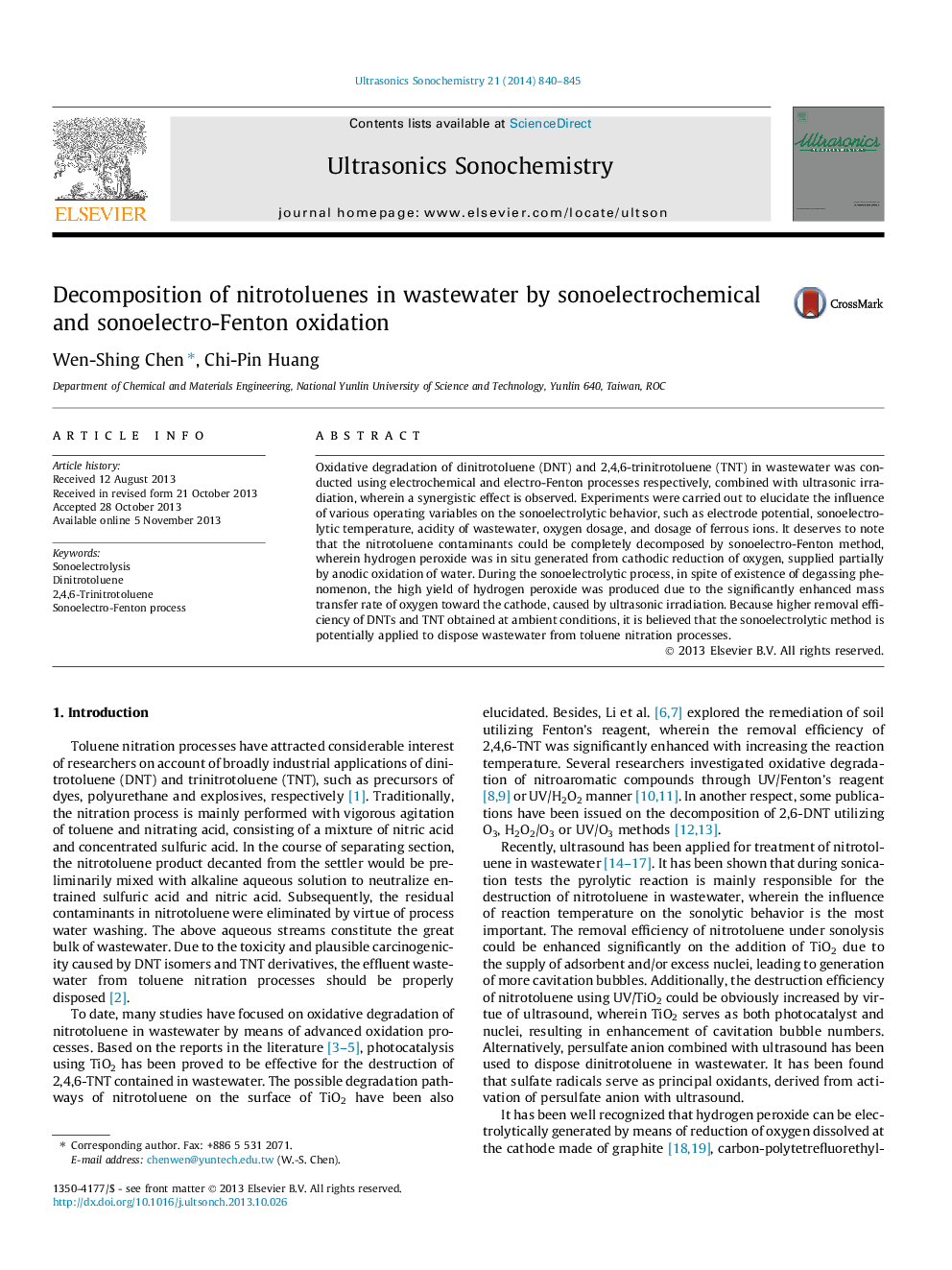| Article ID | Journal | Published Year | Pages | File Type |
|---|---|---|---|---|
| 1265166 | Ultrasonics Sonochemistry | 2014 | 6 Pages |
•The sonoelectro-Fenton oxidation is effective for elimination of nitrotoluene.•A synergistic effect is observed upon combination of electrochemical process with ultrasound.•Hydrogen peroxide could be generated with oxygen mass transfer rate toward the cathode being enhanced significantly.
Oxidative degradation of dinitrotoluene (DNT) and 2,4,6-trinitrotoluene (TNT) in wastewater was conducted using electrochemical and electro-Fenton processes respectively, combined with ultrasonic irradiation, wherein a synergistic effect is observed. Experiments were carried out to elucidate the influence of various operating variables on the sonoelectrolytic behavior, such as electrode potential, sonoelectrolytic temperature, acidity of wastewater, oxygen dosage, and dosage of ferrous ions. It deserves to note that the nitrotoluene contaminants could be completely decomposed by sonoelectro-Fenton method, wherein hydrogen peroxide was in situ generated from cathodic reduction of oxygen, supplied partially by anodic oxidation of water. During the sonoelectrolytic process, in spite of existence of degassing phenomenon, the high yield of hydrogen peroxide was produced due to the significantly enhanced mass transfer rate of oxygen toward the cathode, caused by ultrasonic irradiation. Because higher removal efficiency of DNTs and TNT obtained at ambient conditions, it is believed that the sonoelectrolytic method is potentially applied to dispose wastewater from toluene nitration processes.
